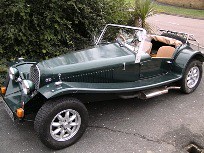Yes, work this weekend. Finally I got some tools out.
Some of you will have heard about my running warm issue, though I've never had 'NNN' boil, and I've already had some advice, particularly from David Painter I think, who recommended I take off the water pump and jetwash the block. This is what I've done in my spare time this Saturday and Sunday.
There was also some question as to the origin of my radiator, as it was sitting funny (having bits of wood locate it at the bottom and it was sitting on some sort of 'tray') and although it took me a while to work out what had been done, I think this is 'NNN's original radiator. I'm going to post a load of pictures (if I can get photo host Photobucket to co-operate) and then comment after, but up front I'll say regarding the rad, the 'tray' is the bottom of the radiator that has either fallen off, or been taken off!
From referencing the Haynes manual, all you people with un-molested Marina radiators have them sitting at the bottom in some rubber grommets pushed into brackets welded to the car chassis. Someone has bolted some black flat plates on mine, forming a bridge across the two structures welded to the chassis each side, and the rubber grommet had been relocated to the middle of the plate.
Then, the 'tray', that is the original bottom of the Marina radiator, is pushed into those grommets - so it is located further back for a 1.8 (I cannot speak for a 1.3, as I have no experience).
On reassembly I discovered that if I sat the rad properly in the 'tray', i.e. its own bottom, it would foul the original yellow plastic engine fan. So, the 'groove' in the bottom of the rad, now it's underside is exposed, sits on the front lip of that 'tray', bringing the bottom of the matrix away from the fan blades.
Still with me? Why, I hear you ask, is my car like this? Saggy engine? Bad gearbox mount? I wondered. Answer, Kenlowe electric fan. The Kenlowe electric fan my car is fitted with, which is, by some standards, a reasonably competent installation, pushes the rad further back. There is already a bit of metal trimmed off the panel under and behind the grille helping to accommodate the fan hub, but if the radiator had stayed put, the Kenlowe would have had to be fitted OUTSIDE the car and lose the front grille!
So the radiator has been pushed further back, with spacers (just bits of rubber pipe) spacing the top brackets back a bit, on the bonnet slam panel, and the bottom of the rad sitting half on, and half off, that tray, which is originally it's own lower panel with mounting stubs, therefore striking a compromise between the rad matrix hitting the engine fan, and allowing room for the electric Kenlowe fan in front. As I said, whether the bottom of the radiator fell off, or was forced off by someone to do the installation, I cannot tell.
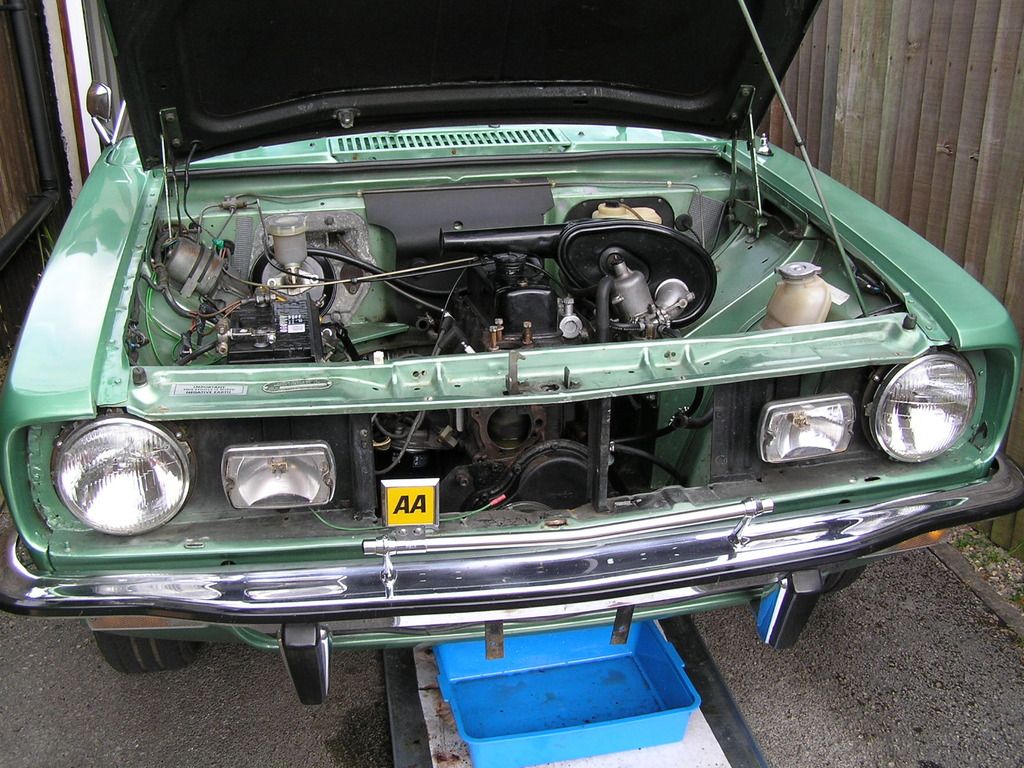
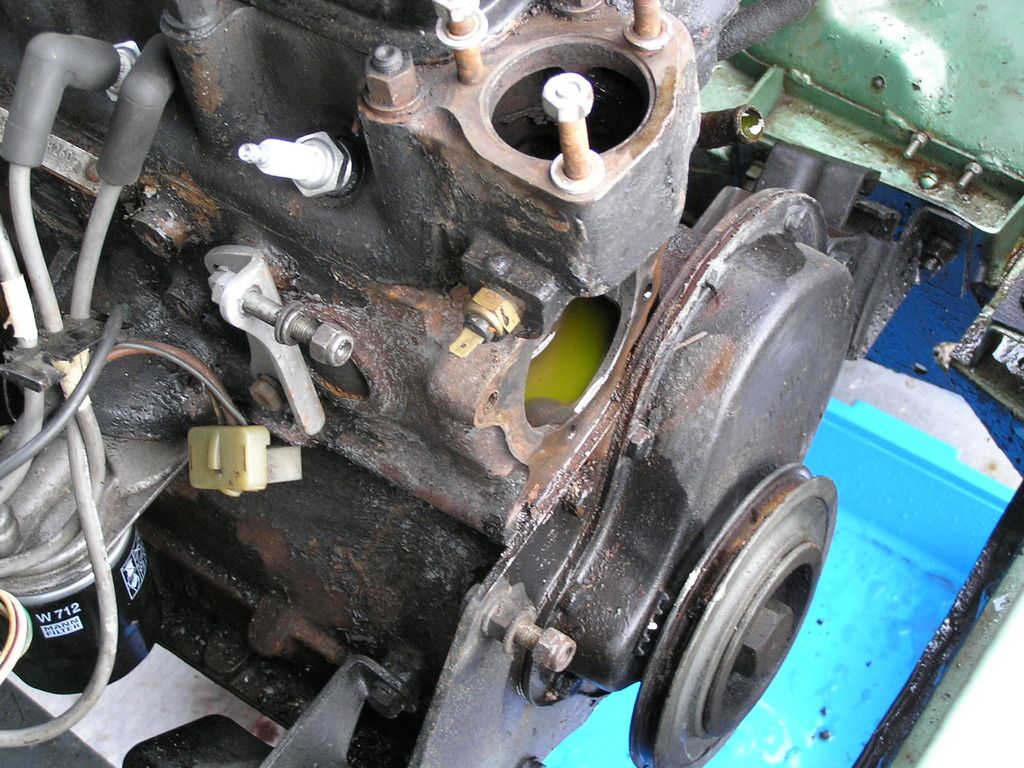

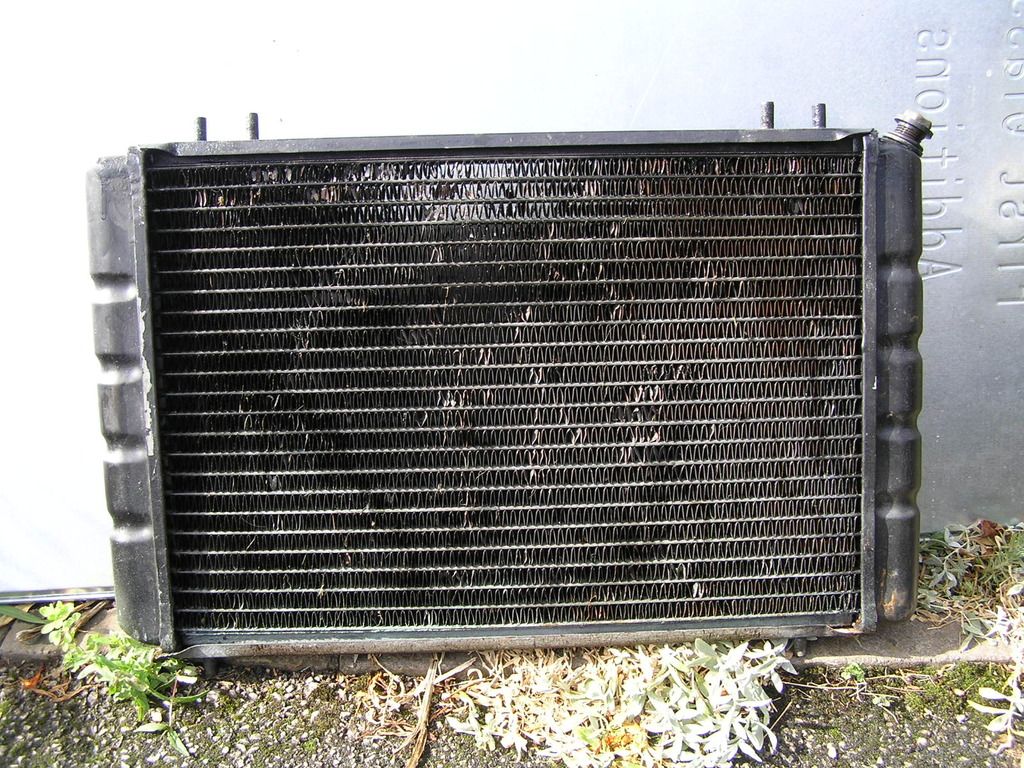

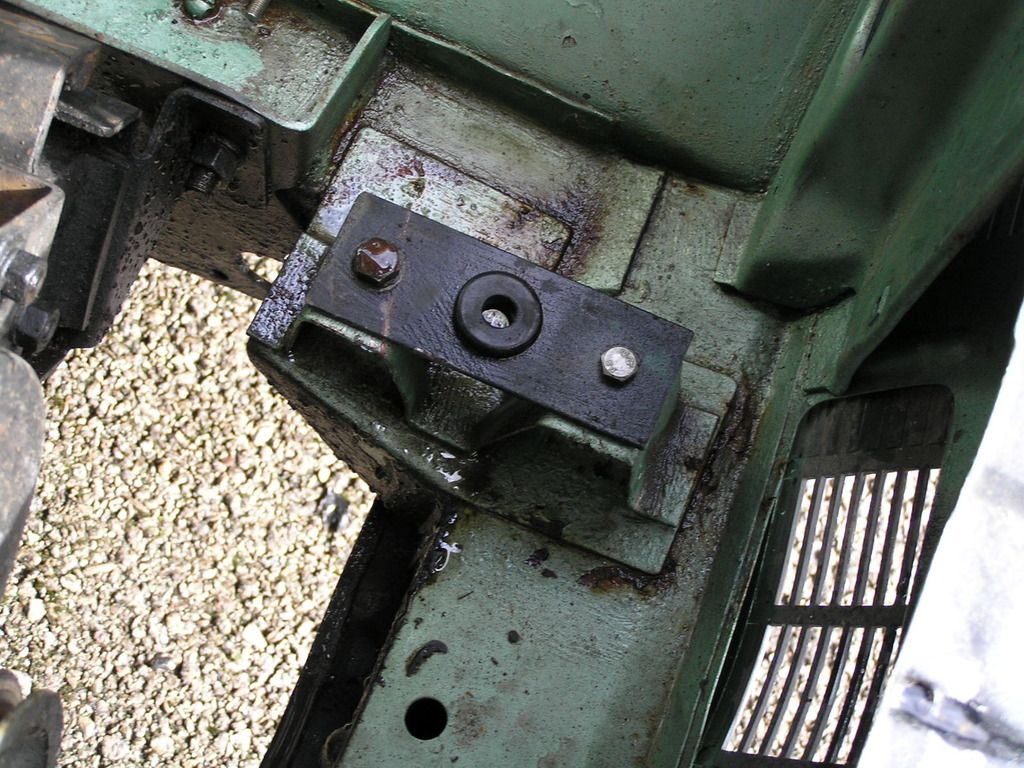
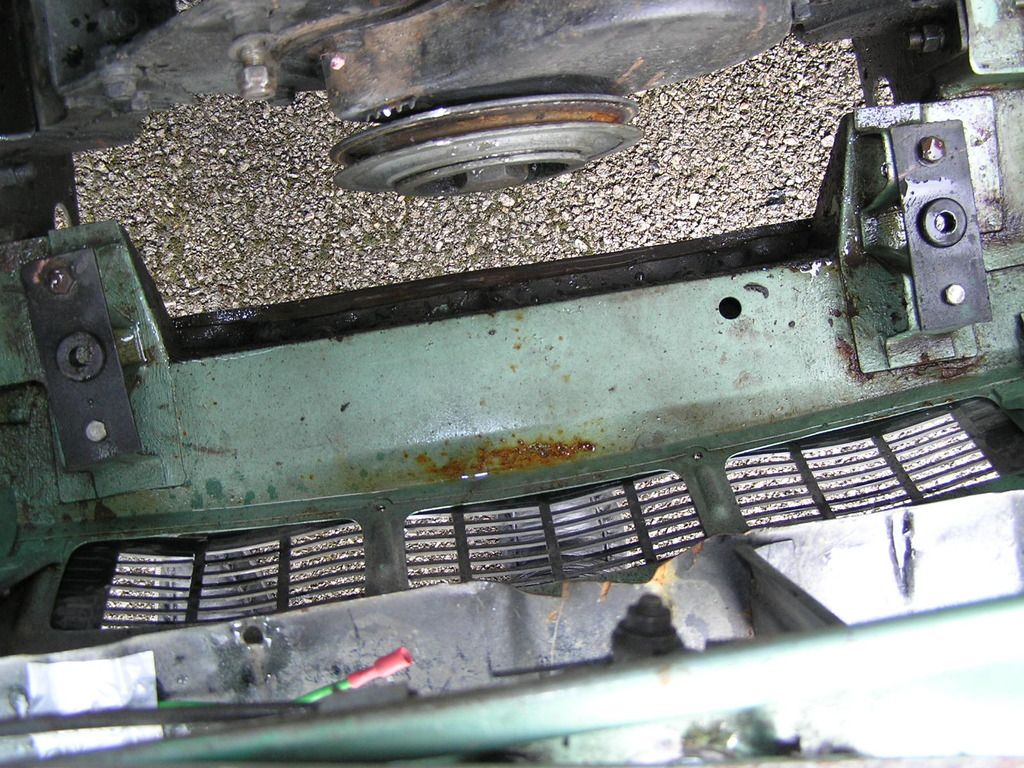
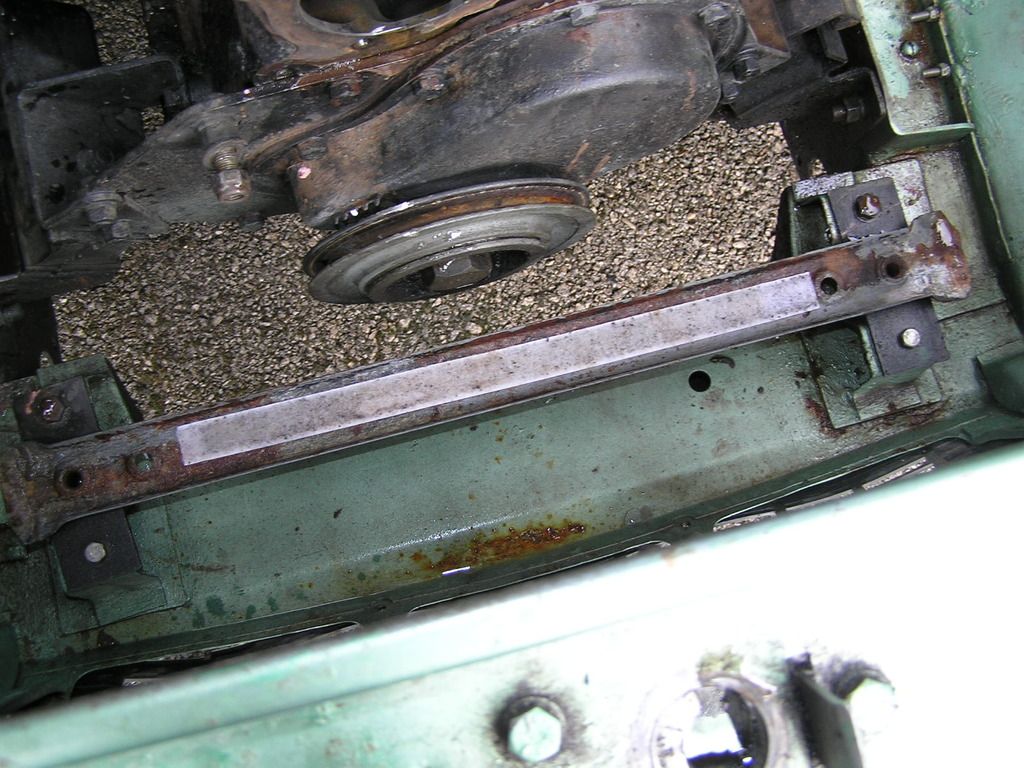
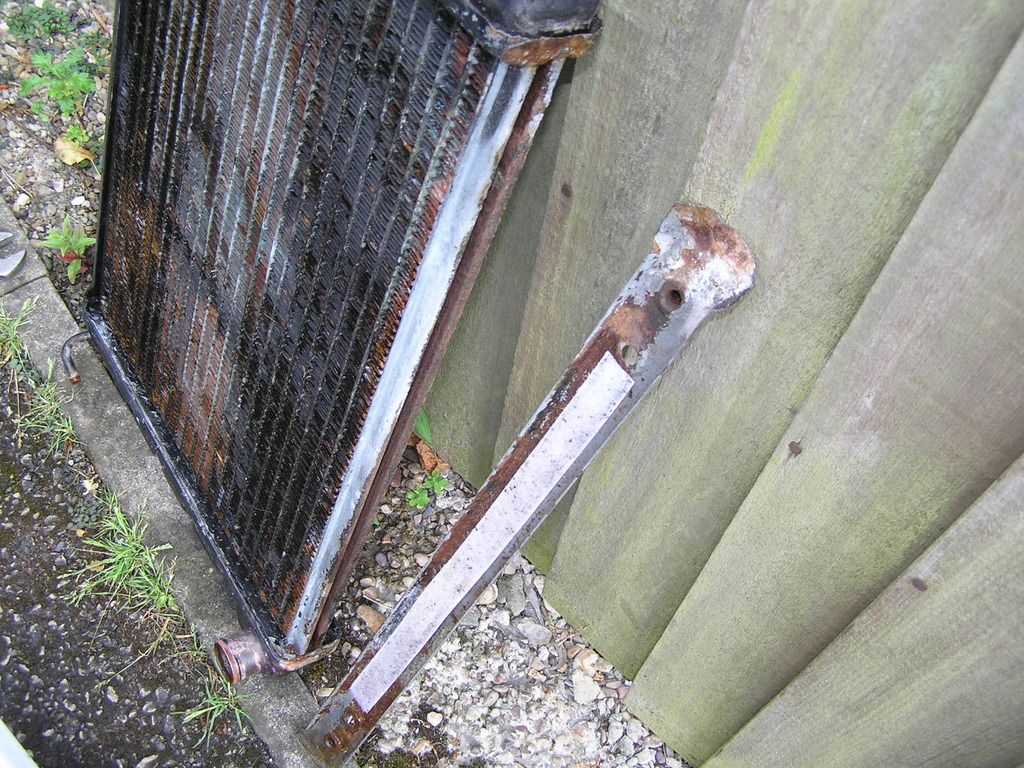
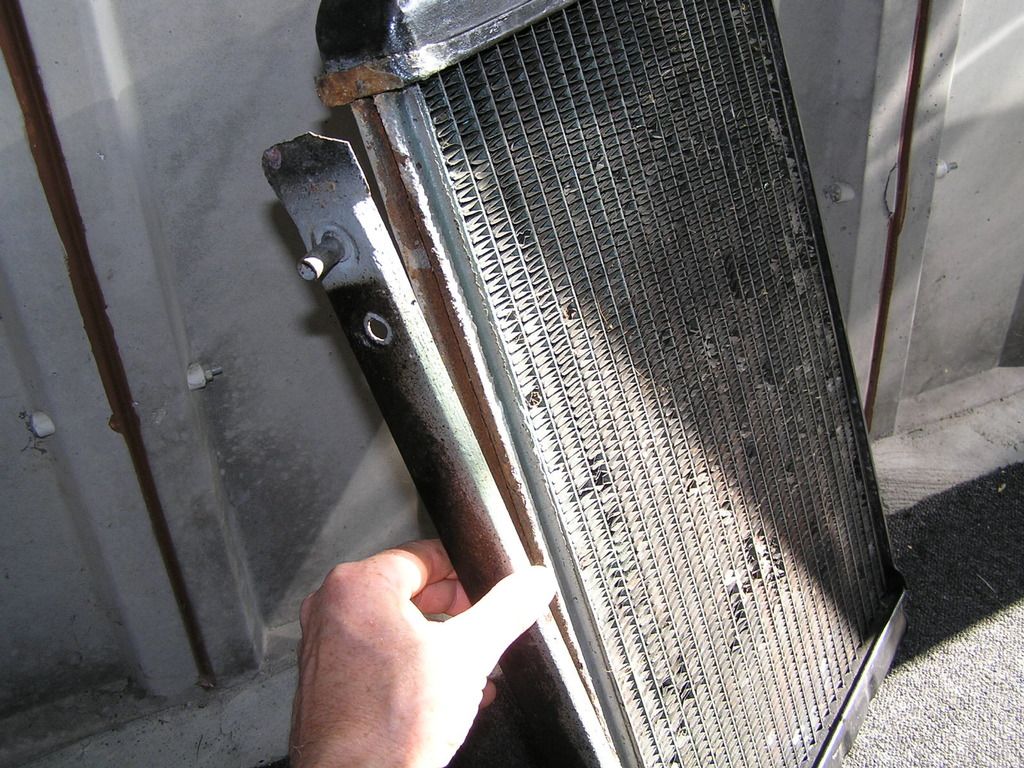
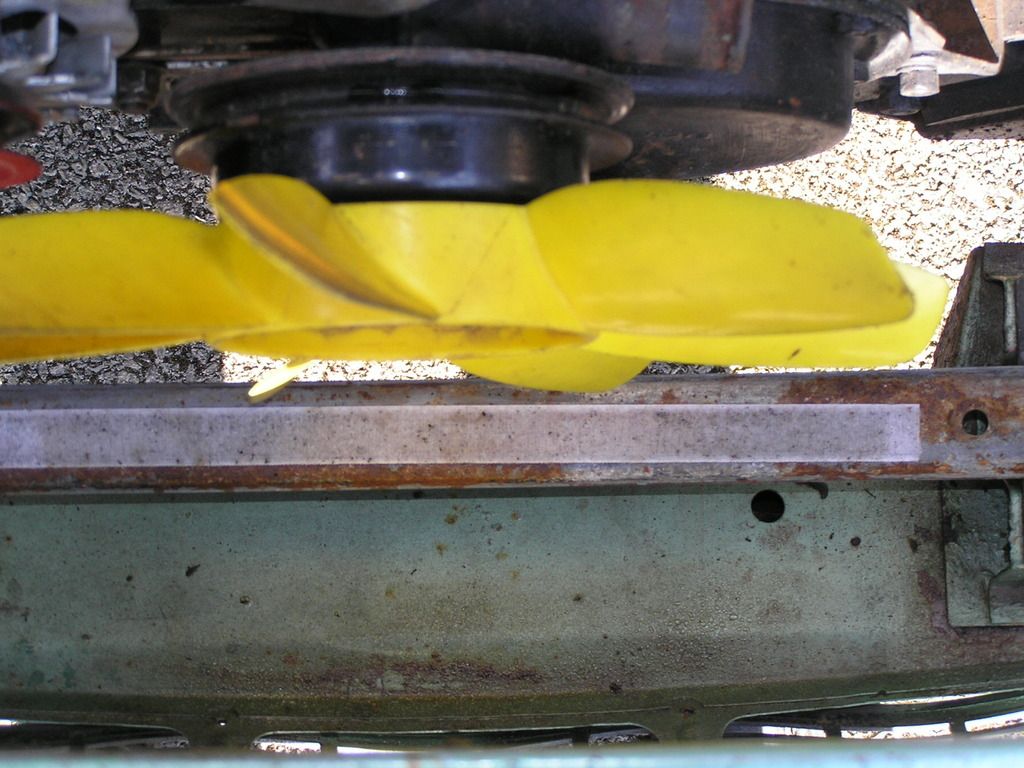
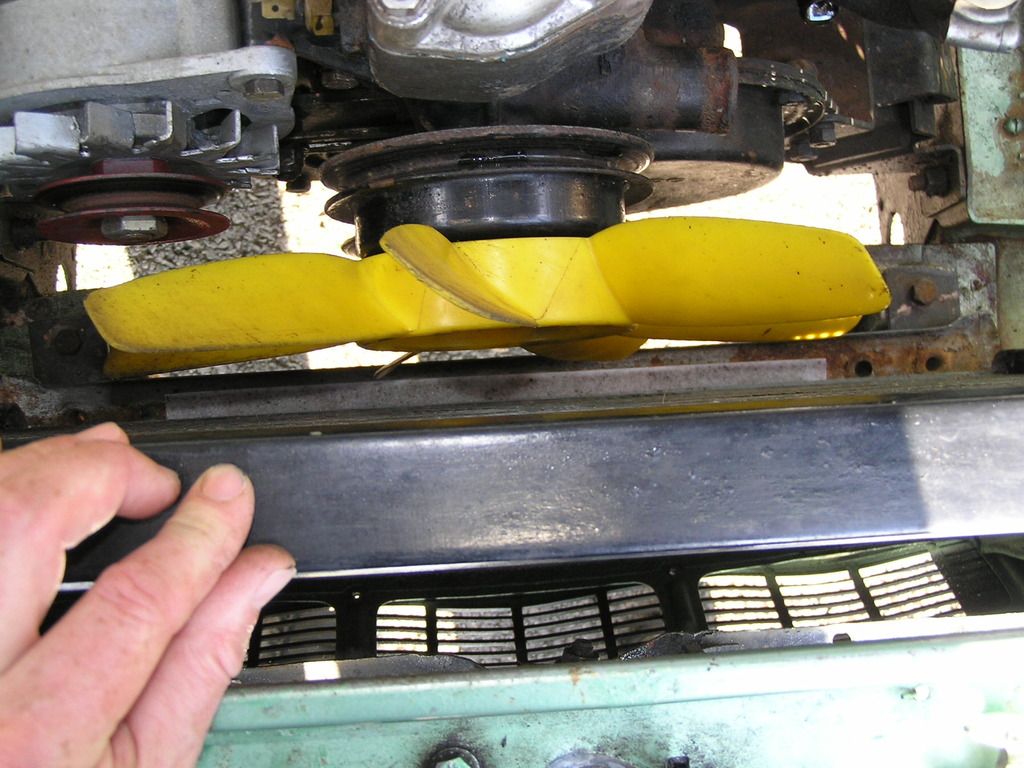
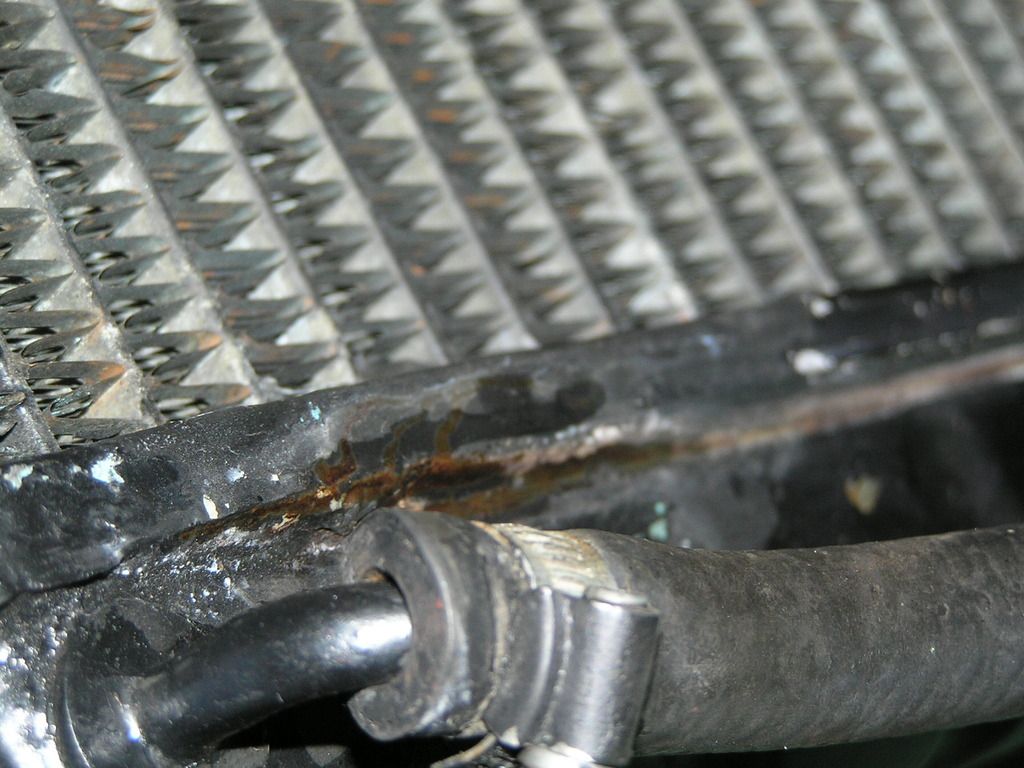

As you can see from the last two photos, no change there then...still getting warm, except now I know why there is a recent invoice for Radweld in the history folder I inherited. Now I've flushed everything, I've got a radiator leak.
The engine was filled with pink antifreeze. Isn't that the OATS stuff, for alloy engines? When I jetwashed the water pump cavity and forced water round the sides of the number one cylinder wall, all the old antifreeze came out like Fairy Liquid - all white foam. For a time, I was hoping that was all my problem was - wrong antifreeze, foaming up and not taking the heat away. Sadly, this is not the case.
So, I jetwashed the bottom of the block. I jetwashed inside the thermostat cavity. I tried jetwashing and then just hosing where the block drain plug came out. I could get nothing in there, and nothing came out, except a bit of black grit on the end of my screwdriver when I probed it. Still, my last 'Mini' never discharged anything from the block drain plug, and that never overheated. I got mains pressure through a hosepipe onto the union on the head that connects to the heater matrix, and I also hosed the heater through. Sometimes when jetwashing the lower block, I could get a bit of water to come out of that union in the head. Not a lot, but some. I spent a lot of time hosing, twisting, turning, using one inlet and then the other, on the radiator. Some dirty water came out, then ran clearer. This morning before reassemby, it did sound a bit like there were some rattly bits in it....but they reduced and stopped after I turned it and shook it a bit.
I've also tested the thermostat in a pan of water over a ring on the stove. I have no thermometer so I couldn't check the temperature, but the thermostat (suspended on a wire) opened and closed normally several times. It is brass coloured, 'Made In England', and I can't see any temperature markings on it.
The water pump has a cast impeller. I think it might be the original, as it has flaking black paint on the outside, although with the rad out I can see it looks as though someone in the past has used black brush paint on the timing chain cover. I think the flaking engine block has original black paint on it though. The water pump bearings seemed very good. The engine (and car) only has 27,000 miles on it from the history and odometer readings.
So when I restarted it, after filling with Blucol, no leaks until I spotted dampness running down the side of the rad that has the filler plug - dampness emitting from a rusty looking bleb. So THAT'S why it had Radweld in it. New rad or recore needed, whatever.
I took 'NNN' for a run, with some top-up water in the boot, just in case, still optimistic at this stage that it wouldn't overheat. I'd not done much above two miles when the gauge crept past centre. Going up Bostocks Lane (an incline) towards the Derby A52 I soon gave up on the idea of heading there. The gauge climbed, the car wouldn't pull the skin off a rice pudding in second gear. I can feel it struggling. From suggestions at Quorn that my issues might stem from incorrect timing, I've checked it at 1000rpm with my timing light and initially it seemed to be set to 15 degrees BTDC. I've tried it at 7 degrees BTDC and currently its set to factory spec 10 degrees BTDC. If anything its slower and worse to drive than before I moved it. I've had the plugs out and I thought they looked normal, but I'm wondering whether the car is running weak. Which would contribute to overheating. With twin carbs I know I need a Carbalancer which I've yet to get, but I'm still nervous about adjusting twin carbs. One SU wouldn't bother me. If there was somewhere I could take the car to get it tuned up (cooling problem aside) I would, but nowadays I don't think your average garage knows what to do unless the laptop computer plugged into a car tells them what's wrong.
So that's it then. An almost lost weekend. I certainly can't flush that engine any more thoroughly than I have, and aside from putting in the right antifreeze and verifying the water pump is okay and the thermostat SEEMS okay, and putting on my new top and bottom hoses, and making my radiator leak, I've achieved nothing.
Finally, can anyone advise me where this bump stop on the offside engine mount is meant to be set? As usual I can turn it by hand as it's not been done up. I don't know if there's meant to be a gap, or if it's meant to be in contact with the engine mount at all times.
Cheers,
Mick
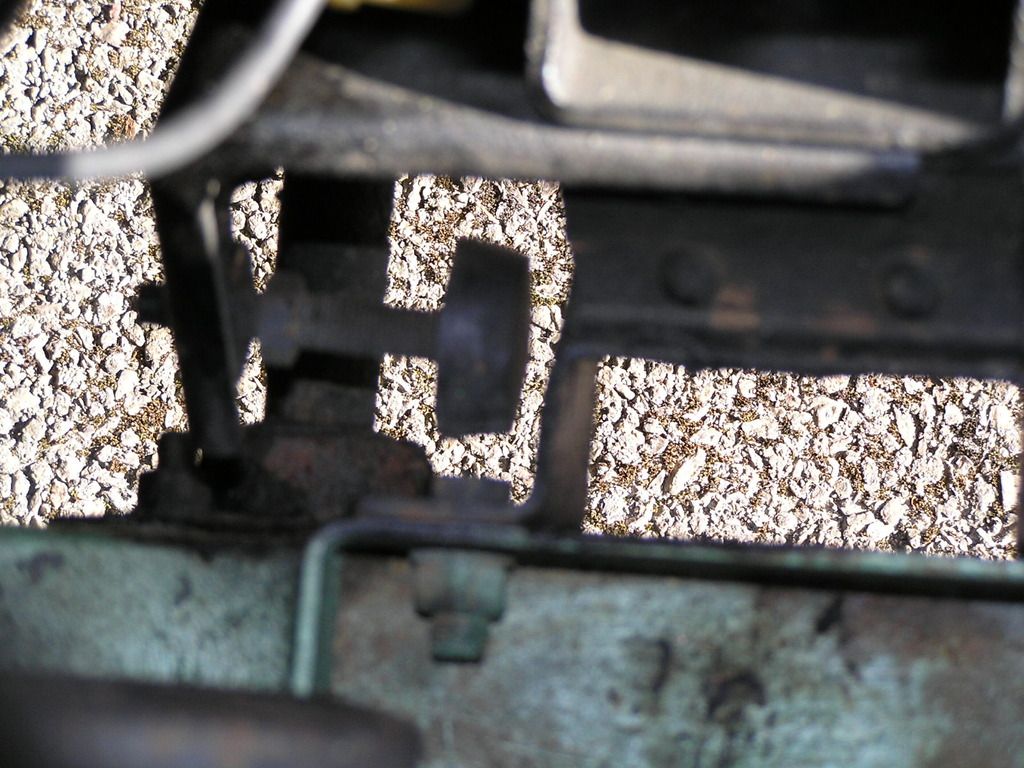
 .
.